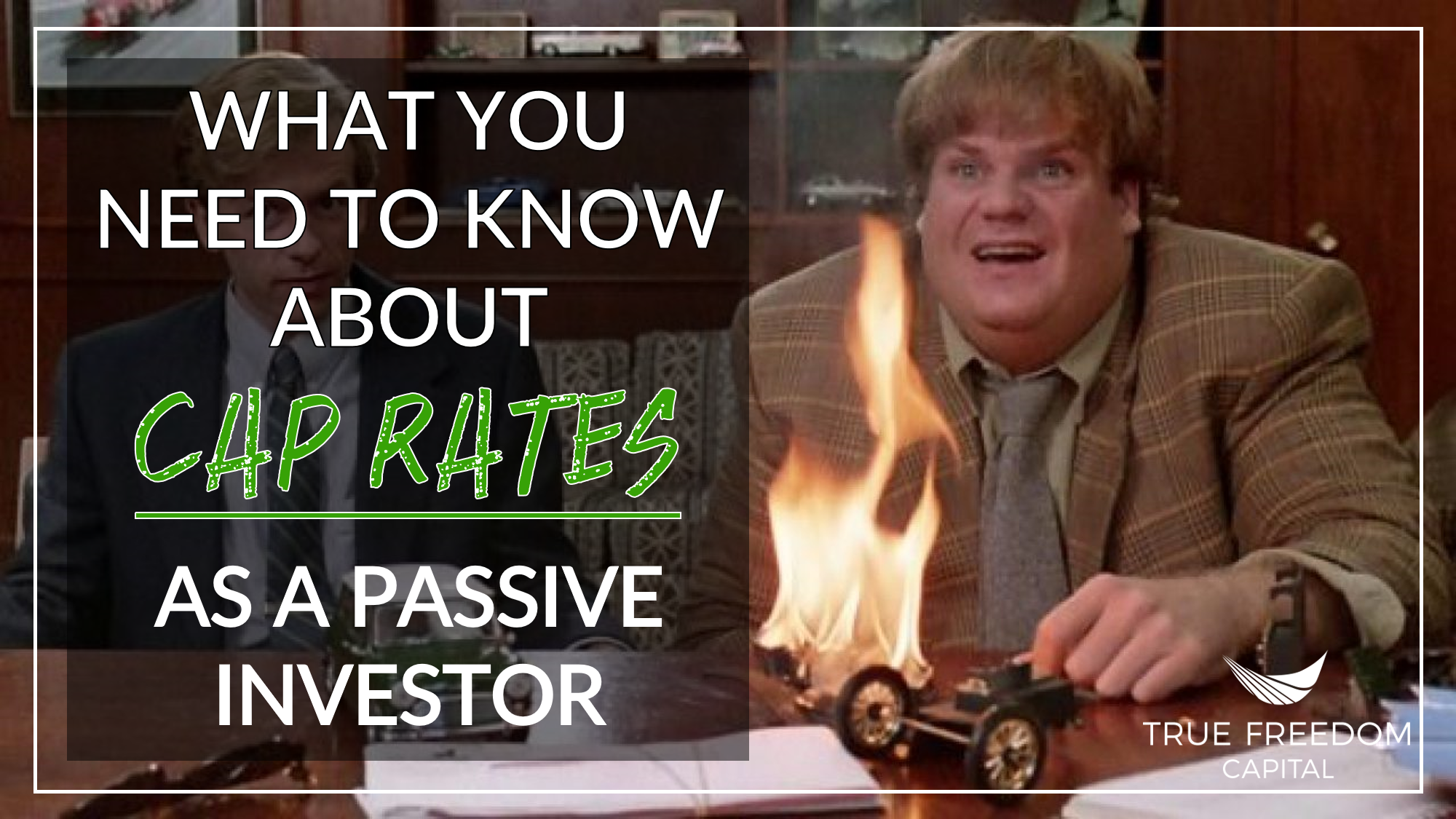
by Joe Firmin 3-Minute Read
Whether you’ve invested in residential real estate before or not, you already know some important, basic lingo like rental income, mortgage interest, and amortization. Right? When you step into the world of commercial real estate, you’ll begin to see other terms, like “cap rate”, thrown around as if everyone inherently knows what that means. Got an image of Tommy Boy in your head acting like, “As if, Richard”? Don’t sweat…
It’s okay if you don’t know what a cap rate is or what it’s used for. Just like Tommy Boy learning how to sell brake pads - it can be challenging to understand and hard to calculate. As a passive investor, you won’t have to do any of the hairy work to calculate cap rates, but it’s helpful to have a very basic grasp on what they are.
What Are Cap Rates?
Cap rate is short for ‘capitalization rate’ and is used to indicate the rate of return expected for a particular property. Investors use cap rate to estimate their potential ROI (return on investment) for a particular asset.
When someone says a property has a cap rate of 5%, or that assets in a given area are trading around a “5-cap,” they are talking about the cash return on that property had they paid cash for it.
How Are Cap Rates Calculated?
There are multiple ways to come up with a cap rate, so be sure to always ask how it was calculated.
Most cap rates are calculated by taking the net operating income (NOI) of a property and dividing it by the market value. Here’s an example for clarity – hopefully better than Tommy’s car burning episode on his customer’s desk!
Cap Rate Example
Let’s talk about a property valued at $1 million. Over the past year, it’s brought in $100,000 in rental income.
After paying $50,000 in expenses, we end up with $50,000 in NOI.
We take the NOI of $50,000 and divide that by the total value of the property.
$50,0000 / $1,000,000 = 5%
This means if we bought that property with $1 million in cold hard cash right now, we could expect to earn $50,000 net income over the course of one year. This, loosely, is your Return on Investment or ROI.

One way to think about it is that it would take 20 years of $50,000 returns to recoup your $1 million initial investment.
If the property generated $150,000 with the same $50,000 in expenses, the cap rate would be $100,000 (NOI) divided by $1 million, which would equal 10%. In that case, it would only take 10 years to recoup your initial investment value.
The higher the cap rate, the faster you’d earn back your investment capital, and the better the investment choice. The good news for you as a passive investor… you don’t need to know all the specifics in order to see success. It is good to know how cap rates are used in commercial real estate though.
How are Cap Rates Used?
Some investors rely heavily on cap rates and look for investments with cap rates of 8% or higher, for example. However, that’s just one data point (from only 1 particular year) on an asset. Cap rates don’t take into consideration other factors like loans or time value of money. This is super important.
When comparing different properties in the same market, cap rates can be very useful.
As an example, if you’re looking at apartments that have a cap rate of 7%, in comparison to other properties that have cap rates of 6.7%, 7.2%, and 7.5%, your property’s cap rate is right in the middle and fairly comparable to the rest.
If the property had multiple points higher or lower than the others in the area, tha
t should be a red flag, but on the bright side, can be used in negotiation.
Cap rates can also be a good general measure of the asset class and corresponding risk in general. Assets with higher cap rates tend to be in developing areas or distressed properties and those with lower rates may be in more established areas and tend to be stable, well-maintained properties. As with most investments, higher rate means higher risk as well.
“OK, Got it.” So, What Do You, As A Passive Investor, Need To Know About Cap Rates?
Now that you’ve slogged through what cap rates are, how they’re calculated, and how they’re used, do you need them?
Not really. Surprise!
Honestly, as a passive investor, there are many data points that are far more important. Trusting the sponsorship team, the business plan and risk mitigation strategies to preserve capital should be higher on your list.
Otherwise, cap rate might carry weight in these two arenas:
#1 – Is the cap rate comparable to other assets in the area?
A strong sponsor team (like True Freedom Capital 😊) will have already evaluated the property to ensure the cap rate is comparable to others in the area, but you could double-check that your property isn't 4% while others are 7%.
#2 – What’s the reversion cap rate (aka exit cap rate)?
Here’s one that might throw you for a loop - Reversion Cap Rate.
Sometimes the cap rate is referred to as the exit cap rate because the reversion cap rate is a measure of the cap rate at the sale of the asset, versus the cap rate at the time you purchased the asset.

If nothing else, take this with you: When evaluating a potential real estate syndication deal, be sure the reversion cap rate is at least 0.5% HIGHER than the current or purchase cap rate.
This means that the sponsors believe the property or market conditions will be WORSE than they are now. In other words, they assume things will be in worse condition and that the property will sell for a lower price.
If the current cap rate is 5%, then the reversion cap rate should be at least 5.5%. That will be a great indicator of conservative underwriting and that projections include the possibility of the market softening in upcoming years.
Cap Rates - All Said And Done
At the end of the day, cap rate is a single measurement at a single point in time, based on the current performance of a given property. Cap rates don’t measure the potential of an asset or how much you’ll receive in distributions. They also do not account for debt on a property.
As a passive investor, you definitely want to know what things mean and be on the look for this terminology while choosing an investment. Beyond that, you’re good. It is good education nonetheless. As always, we’re here to help you understand these investments, so please reach out with any doubts or questions.
If you’re interested in learning more about investing in value-add investments and becoming a passive investor in real estate syndications, consider joining the Freedom Network. It’s absolutely free to join with no commitment necessary, seriously. If you don’t join, we won’t be able to send you opportunities (sorry, SEC rules). So join today! Not sure how it will work? Check out this post to understand the logistics.
